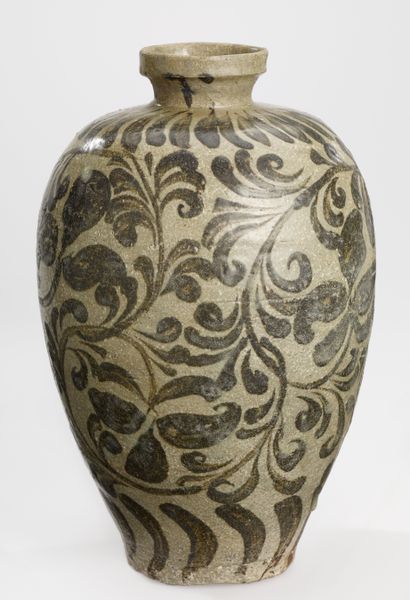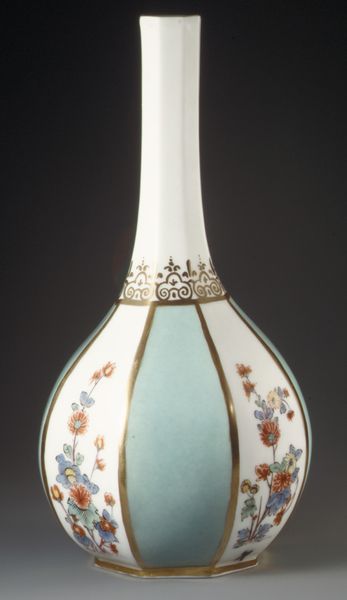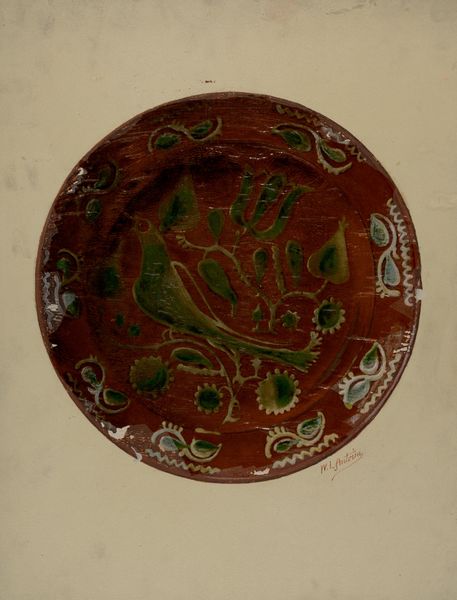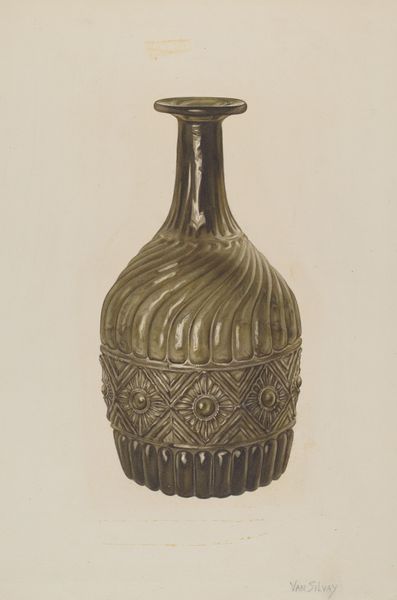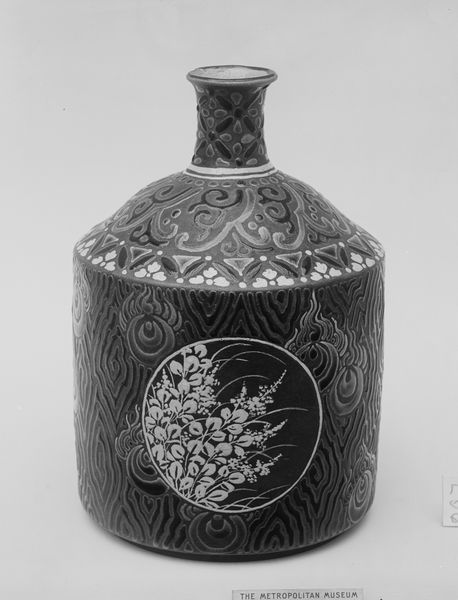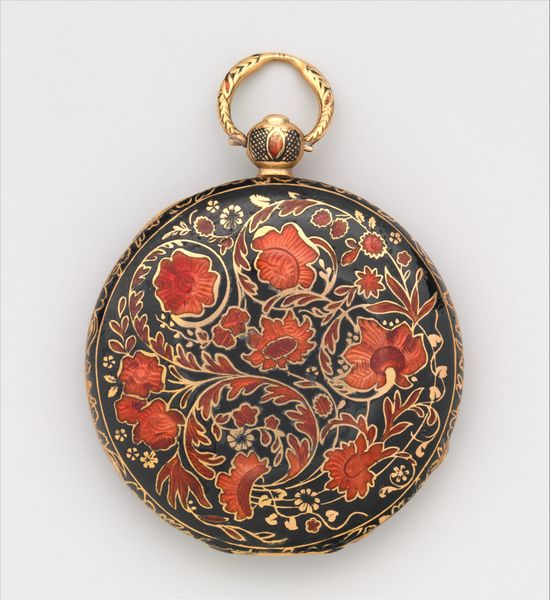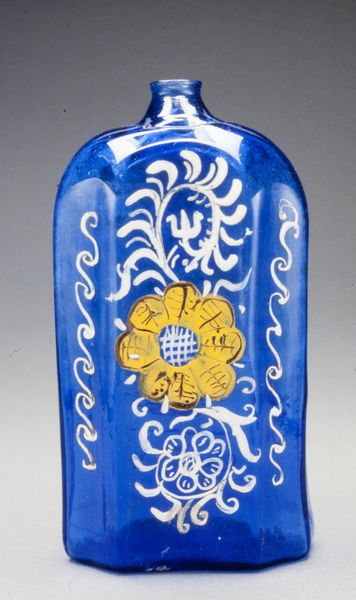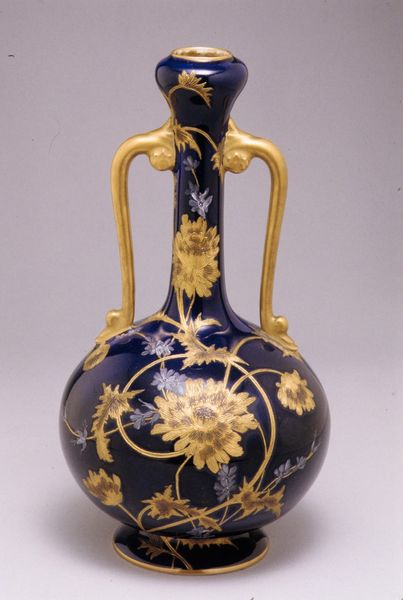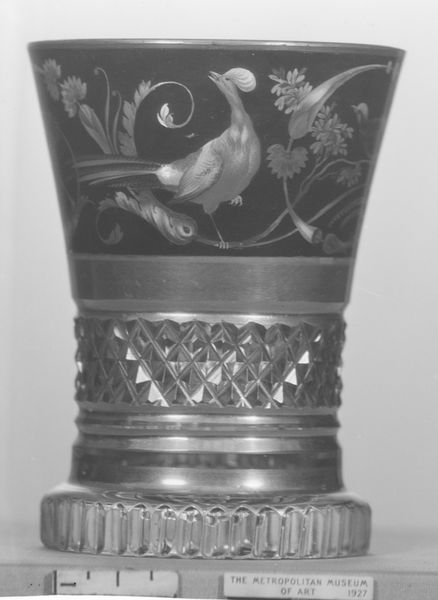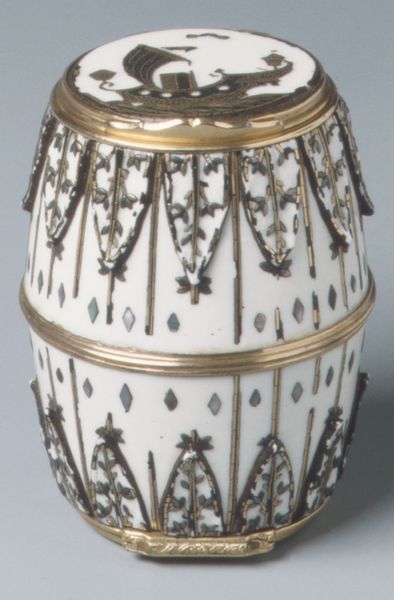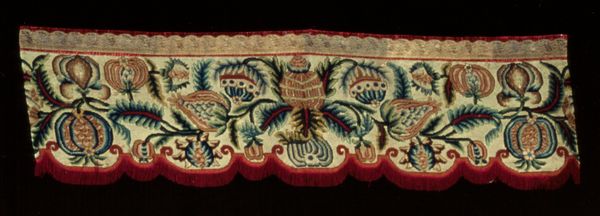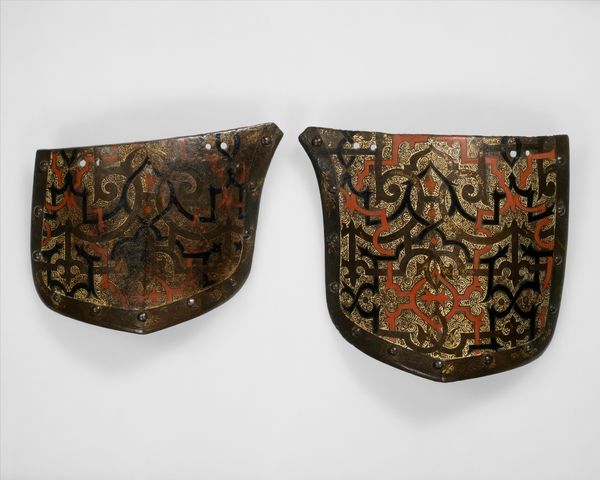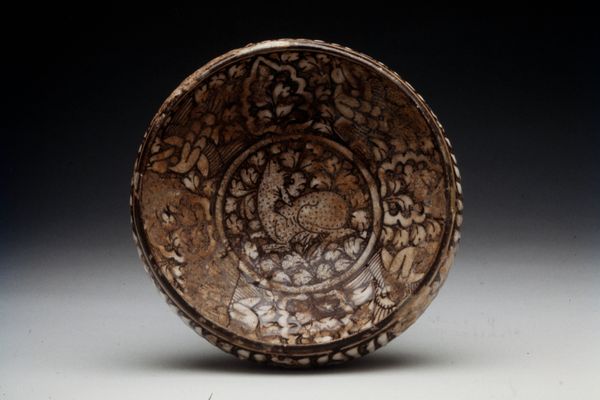
Case (Inrō) in Shape of Tea Caddy in Its Brocade Cover 19th century
0:00
0:00
tempera, ceramic, textile
#
tempera
#
asian-art
#
ceramic
#
textile
#
japan
#
ceramic
#
decorative-art
#
decorative art
Dimensions: 2 1/2 x 2 3/16 x 1 1/16 (6.3 x 5.6 x 2.7 cm)
Copyright: Public Domain
Curator: This delightful object is titled "Case (Inrō) in Shape of Tea Caddy in Its Brocade Cover," crafted by Koma Kōryū in the 19th century. It’s a beautiful example of Japanese decorative art currently residing at the Metropolitan Museum of Art. Editor: The detail is astounding! It looks almost like lacquered ceramic. There's this amazing tactile sense you get just from the photograph, like I can feel the weave of the textile cover and the coolness of the ceramic. Curator: Exactly! It blends different materials: the main body likely features tempera on ceramic, mimicking a tea caddy. But the addition of the brocade cover transforms it into a unique object—an Inrō, meant for carrying small items, often medicine. This merging shows how artistry can elevate everyday objects. Editor: It's that intersection of utility and adornment that intrigues me. We’re seeing, really, an artisan engaging with existing structures—the tea ceremony and carrying of medicines— and re-envisioning them in terms of luxury. It feels a bit transgressive almost to see these two contexts combined. Curator: Inrō themselves became powerful symbols of status in Japanese society, worn suspended from the obi sash of samurai and wealthy merchants. They moved from simple containers to elaborate expressions of wealth and taste, reflecting the social hierarchy of the Edo period. Editor: Yes, it becomes very visible how taste becomes class, the ways these pieces, seemingly personal items, function almost as a form of capital. It makes me wonder, what kind of labor went into creating such a meticulously detailed piece? Were these artisans anonymous workers or were they lauded figures? Curator: Craftspeople like Koma Kōryū often worked under patronage, producing pieces for a specific clientele who would've admired this delicate harmony. And the design elements—the repeated leaf pattern rendered in red and gold—speak to an appreciation for the natural world, recontextualized as symbols of prosperity and refinement. Editor: Considering its function as a portable case, the layers of artistic expression woven in are pretty compelling. It reminds you that beauty and craft are intrinsic to the lives of both those who produce it and the world that encounters it. Curator: I agree. Thinking about its journey through history, from the artist's hands to the museum display, we're invited to reflect on how society values functional art. Editor: A beautiful meditation on how our daily items become more than their basic parts through dedicated skill.
Comments
No comments
Be the first to comment and join the conversation on the ultimate creative platform.
